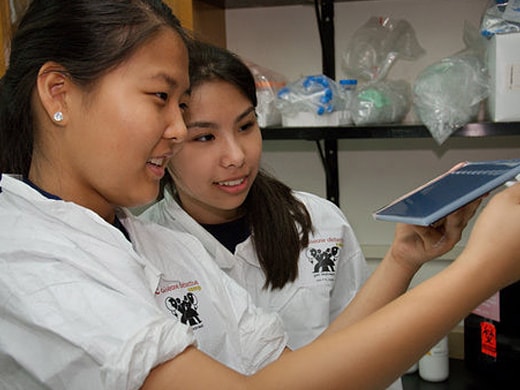Public Health in STEM Education
The academic disciplines of science, technology, engineering, and math (STEM) form a foundation for public health. CDC aims to foster educational excellence, establish a pathway to basic STEM literacy for all students, and inspire the next generation of STEM learners to pursue public health careers.
Our STEM experts are at the forefront of safeguarding our nation’s health. In fact, our talented and trusted public health workforce is CDC’s greatest asset. The combined talents of many different scientists and other experts across multiple disciplines—including STEM, liberal arts, and the humanities—sparks ingenuity, leads to technologically sophisticated data-driven science, and inspires the next generation of STEM learners in public health. To prepare a highly skilled and diverse workforce for the future, it is critical for CDC to build and maintain multi-disciplinary pathways into public health careers.
Dr. Rochelle Walensky, the CDC Director, welcomes the next generation of STEM learners to public health. Learn more about Dr. Walensky’s STEM journey through questions submitted by students from around the United States.
Public health is about more than just preventing and responding to disease outbreaks. It’s about science to protect and improve the health of communities through policy recommendations, communications, health education and outreach, evaluation, and the research to give every person the opportunity to be as healthy as possible. The standard definition of public health used for over a century was developed by C.-E.A. Winslow, a leading figure in the modern study of public health. He described public health as “the science and art of preventing disease, prolonging life, and promoting health through the organized efforts and informed choices of society, organizations, public and private communities, and individuals.”
In other words, public health is the science of helping people.
Public health practice involves professionals from all STEM disciplines, including statisticians, biologists, epidemiologists, informaticians, data scientists, microbiologists, and economists, as well as the liberal arts and the humanities. Some of the essential skills that public health professionals use cut across multiple disciplines. These skills include problem-solving, critical thinking, communication, innovation, and collaboration.

Public health examples in daily life can be used to teach students about applied STEM concepts. It improves their understanding about how things like disease transmission, individual behavior, and the social influences on health are all connected. It also teaches students essential skills such as problem-solving, critical thinking, innovation, collaboration, and communication. For example, problem-solving in public health can spark ingenuity. It allows students the opportunity to practice pivoting, adapting, and changing their thinking as knowledge evolves. This lifelong skill will help students think critically about the world around them. It will help them make informed decisions not only in their public health careers, but also in their daily lives.
Public health has never felt more real for youth. Students are facing real-life experiences with some of today’s most pressing public health issues, including misuse of prescription opioids, obesity, vaping, bullying, racism, and even a global pandemic. Understanding public health can help youth make sense of their worlds. It can also:
- Lead to greater appreciation for the role of STEM in preventing and addressing public health crises and building a healthier world for all.
- Show students how they can help design realistic solutions to large-scale health issues by pursing a public health career.
- Provide new ideas for career paths, even for students whose main interests lie outside of STEM subjects.
To have a workforce prepared to address today’s issues, we need to spark the interest of middle and high school students in STEM‐based careers—especially public health. As the current generation of public health workers retire, it is critical to prepare the next generation of skilled professionals to confront ongoing and emerging public health threats.
- Students who receive effective STEM education earlier are more likely to pursue STEM careers and accept jobs in STEM fields.
- Research suggests that students know by 8th grade what their general professional field will be.
- Exposure to science at the middle and high school levels attracts students to careers in STEM fields, including public health.

This is a list of STEM Resources at CDC for teachers, students, and public health professionals.
STEM Resources at CDC pdf icon[PDF – 512 KB]
Teaching public health in grades K–12 can support lifelong health literacy in students and help them build essential skills for the future.